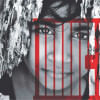Are Bangladesh's expectant mothers being coerced into unnecessary, dangerous operations?

The phrase "too posh to push" was first used by British tabloids in the 2000s highlighting the trend among celebrities choosing to have their babies by caesarean section, as opposed to natural childbirth. In Bangladesh it is not because they are "too posh" rather it is because they are often coerced into having an operation even when it is not necessary. Every year, an astonishing one million C-sections are performed in Bangladesh. There are whole countries whose population does not amount to that figure—Bhutan for example.
Recently, the preliminary report of the Bangladesh Maternal Mortality and Health Care Survey (BMMS) 2016 was published. BMMS 2016 was implemented under the National Institute of Population Research and Training (NIPORT) with technical assistance from MEASURE Evaluation and icddr,b. The report finds that rates of C-sections in Bangladesh have soared from 12 percent in 2010 to 31 percent in just six years, far surpassing the recommendation by the World Health Organisation (WHO) which estimates that less than 15 percent of all births in the global south and less than 9.5 percent in wealthy nations should be caesarean.
While access to facilities for delivery has increased significantly (from 27 percent in 2010 to 47 percent in 2016), alongside improvements in anaesthetics, operating procedures and antibiotics, the C-section still poses a real risk. C-sections often lead to infection, damage to other organs during surgery or haemorrhage. It can also put the baby in danger if the infant's gestational age has been miscalculated and the child is removed from the womb too early. Risks to the mother increase with each successive C-section, and the procedure isn't recommended for women who plan to have more than two children.
On the other hand, there are cost implications too. The report finds that the median expenditure for C-sections is five times higher than that of a normal facility delivery—indicating that there is commercial incentive to encourage women to opt for the more costly, yet more dangerous option of a C-section.
But here it gets interesting. It was found that C-sections are positively correlated with an increase in household wealth and women's education. More than half (56 percent) of the women in the richest households, and those who have at least completed secondary education, delivered by caesarean. Of all C-section deliveries 79 percent are at private health facilities. And thus, does the phrase "too posh to push" become justified? Delivery by medically trained providers has doubled from 27 percent in 2010 to 50 percent in 2016 but it was also found that rates of C-section are higher in urban than in rural areas.
So, should women be blamed for the ever-increasing rate of C-sections? Absolutely not. Around the world, rates of caesarean sections are soaring, particularly in developing countries. Additionally, we lack data to confirm if it is due to patients' choice. But we do need to do more to counter the message from facilities whose profits increase when women choose to have C-sections.
In another icddr,b study published in PLOS One in November 2017, researchers have analysed data from Matlab Health and Demographic Surveillance System (HDSS). They found that in icddr,b's service area in Matlab, Chandpur, the facility-based delivery rate in 2013 was 84 percent and population-based C-section rate was 35 percent of all deliveries (Begum et al. 2017), whereas the World Health Organisation has recommended that the population-based C-section rate should lie between five and 15 percent. They also concluded that probability of C-section delivery increased with improved socio-economic status, higher education, lower birth order, higher age, and with greater antenatal care use and presence of bad obstetric history. Eight maternal deaths occurred, of which five were delivered by C-section.
According to the WHO, caesarean sections should only be done out of medical necessity, because the surgical procedure can put the health of women and their babies at risk. Caesareans save lives for sure, for example, when women are in obstructed labour or their babies are in distress. But two studies show that in countries where they account for more than 10 percent of births there is no evidence that mortality rates improve.
In the Bangladeshi context, according to BMMS 2016, two out of three deliveries at facilities were performed by C-section. It also finds, only three percent of all facilities had service readiness to provide quality normal delivery services. Insufficient readiness of facilities must be a significant contributory factor to the high number of C-section deliveries in Bangladesh.
Another noteworthy downside of C-sections is that a mother's intestinal and vaginal flora play a significant role in colonising the baby with its first intestinal microbes, known as gut flora. Studies have shown that missing out on these precious microbes when being born via C-section can throw off the whole gut microbiome—possibly for life.
Let's make a call to all the facility owners, doctors and everyone belonging to the obstetrics community to be rational, to be ethical, to be committed to saving lives and put an end to the practice of encouraging women to have unnecessary C-sections.
The focus should be on providing world-class prenatal care, providing education and support on the birthing process and ensuring that we have facilities equipped for safe natural childbirth and only choosing a C-section when it is genuinely necessary.
BMMS 2016 also finds that access to communication has significantly increased—about 94 percent of households now own at least one mobile phone while 60 percent have access to a TV or radio. Let's make a call to all expectant parents to make decisions that are well-informed based on evidence and not on fashion or overzealous promotion.
Farasha Bashir is Communications Specialist, Communications at icddr,b. AKM Tariful Islam Khan is Media Manager, Communications at icddr,b.

 For all latest news, follow The Daily Star's Google News channel.
For all latest news, follow The Daily Star's Google News channel. 








Comments